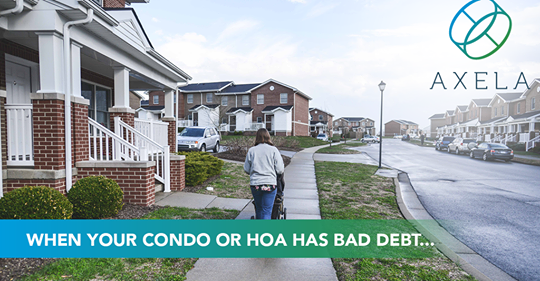PALM BEACH & BROWARD COUNTIES RELEASE NEW OPENING ORDER PROCEDURES AFFECTING COMMUNITY ASSOCIATIONS
by Kaye Bender Rembaum
 To further address the re-opening of both Palm Beach and Broward Counties new Orders have been issued and are already in effect. Links to each new order are located below this article. In all instances, social distancing and wearing of masks when in public is still advised.
To further address the re-opening of both Palm Beach and Broward Counties new Orders have been issued and are already in effect. Links to each new order are located below this article. In all instances, social distancing and wearing of masks when in public is still advised.
Has your association considered adopting new rules consistent with social distancing policies and wearing of face masks when members are in common areas and common elements? Discussion with your association’s attorney is warranted when preparing such rules for board adoption.
Remember too, so long as the State of Florida remains under a State of Emergency as declared by the Governor (due to expire July 7), the statutory emergency powers remain available to community associations which includes the power to close amenities when based upon the advice of licensed professionals or emergency management officials. With that in mind, after consultation with the aforementioned licensed professionals or emergency management officials, amenities can be closed. Moreover, there is no obligation to open amenities if the board believes, that in its reasonable business judgment, doing so would create an unsafe condition and/ or if compliance with local, state, and federal orders cannot be met.
Our comments to assist your understanding of each of these orders are provided in red text. Stay safe!
PALM BEACH COUNTY – ORDER 2020-07
In addition to addressing other re-opening directives, Palm Beach County Order 2020-007 addresses tennis courts, swimming pools along with other amenities. It became effective May 18, 12:01 am.
TENNIS COURTS:
Applies to Community Associations
Tennis and outdoor racquet facilities may reopen, and doubles play is permitted, provided that CDC Guidelines, including all social distancing guidelines, are adhered to. In addition, the following restrictions shall apply:
- No congregating on the court or sidelines is permitted.
-
Locker room and shower facilities shall remain closed. Restrooms must be cleaned and disinfected regularly throughout the day. Soap and water or hand sanitizer and/or disinfectant wipes shall be provided in each restroom.
-
It is the responsibility of staff or management to ensure compliance with this order.
-
Tennis instruction may be conducted on an individual basis where strict social distancing is followed.
COMMUNITY POOLS:
Applies to Community Associations, and while the requirement for on-site supervision is removed, the association is still responsible to ensure compliance!!!
- For purposes of this Order, “Community Pools” are defined as any and all pool decks and/or pools, whether of a commercial or noncommercial nature, other than one located on a single family residential lot, a single townhouse unit, or any part of a duplex lot, and which is utilized only by inhabitants of that lot or unit. Examples of Community Pools include, but are not limited to, hotel pools, motel pools, apartment building pools, homeowner association pools, condominium association pools, aquatic centers, or any other facilities that are authorized for use by more than one family.
Community Pools may reopen provided that CDC Guidelines, including all social distancing guidelines, are adhered to. In addition, the following restrictions shall apply:
a. Pool capacity shall be limited to ensure that social distancing in accordance with CDC Guidelines is maintained at all times.
b. Locker room and shower facilities shall remain closed. Restrooms may remain open and shall be cleaned and disinfected regularly throughout the day. Soap and water or hand sanitizer and/or disinfectant wipes shall be provided in each restroom.
c. Pool deck seating or lounging shall be restricted to ensure social distancing in accordance with CDC Guidelines.
d. Staff that is authorized to manage the Community Pool, or their designee, including, but not limited to, Community Pool staff, management company staff, volunteers, board members, or any other authorized persons, shall provide notice, either electronically, by mail, and/or by posting at the Community Pool or any other place where messages are traditionally posted, one or more notices indicating that all users of Community Pools shall abide by any and all social distancing guidelines, including, but not limited to, the CDC Guidelines, and that said users of Community Pools bear the responsibility of such compliance and assume the full risk of utilizing the Community Pools.
e. Staff that is authorized to manage the Community Pool, or their designee, including, but not limited to, Community Pool staff, management company staff, volunteers, board members, or any other authorized persons, shall ensure compliance with all guidelines and requirements set forth in this Order. Such compliance may be accomplished by any reasonable means, including, but not limited to, periodic spot checks, video or other electronic monitoring, and/or compliance hotlines to allow for reporting of violations that are thereafter promptly investigated. In the event that repeated violations occur, staff authorized to manage the Community Pool, or their designee, shall take corrective action, including, but not limited to, closing the Community Pool, limiting access to the Community Pool on a reservation basis only, and/or limiting access to Community Pools to times when staff is present to monitor for compliance.
[Emphasis Added]
RESTRICTION OF RECREATIONAL ACTIVITIES IN PUBLIC PARKS, PRIVATE PARKS, AND NATURAL AREAS:
While not directly applicable to community associations, this section does provide limited guidance as to how similar amenities are being treated by local government.
- All park playgrounds, play and exercise equipment shall remain closed.
2. Picnic pavilions shall remain closed.
3. Use of water fountains is prohibited.
4. Basketball courts may be open.
- Tennis, racquetball, and pickleball courts may be open.
Recreation buildings and gymnasiums may reopen subject to 50% capacity limitations and social distancing guidelines included in State of Florida Office of the Governor Executive Order 20-112 and related subsequent orders.
In addition to addressing other re-opening directives, Palm Beach County Order 2020-007 addresses tennis courts, swimming pools along with other amenities.
It became effective May 18, 12:01 am. Find it HERE or copy and paste this link into your browser:
https://kbrlegal.com/wp-content/uploads/2020/05/PBC_EO-7-with-attachment.pdf
BROWARD COUNTY ORDER 20-10
Broward County Order 20-10 addresses re-opening community rooms, fitness centers and gyms in housing developments (i.e., community associations) and re-affirms prior pool re-opening mandates. The order went into effect May 18th at 12:01 am.
Attachment 6: COMMUNITY ROOMS, FITNESS CENTERS, AND GYMS IN HOUSING DEVELOPMENTS
No community room, fitness center, or gym is required to be opened if the housing development does not wish to do so or believes it cannot do so safely and in full compliance with the requirements of this Emergency Order; any decision by a particular housing development is also subject to any applicable internal rules or regulations of that entity.
A. Capacity Requirements
1. Maximum 50% occupancy. Social distancing requirements do not apply to members of the same household.
- Community rooms, fitness centers, and gyms shall be limited to residents of the housing development only. No guests shall be allowed.
-
Exercise machines, equipment and tables must be rearranged and/or closed for use to ensure at least 6 feet of distance between patrons using such machines, equipment, or tables. Social distancing guidelines provided by the CDC shall be adhered to at all times.
-
No gatherings or multi-player games (e.g., mahjong, poker, etc.) are permitted in the community rooms between persons who do not reside in the same household.
B. Sanitation and Safety Requirements
- Before reopening, the community room, fitness center, or gym (as applicable) must be thoroughly deep cleaned, disinfected, and sanitized. After opening, community rooms, fitness centers, and gyms must be deep cleaned daily.
Housing developments shall provide disinfecting wipes, and residents shall be required to wipe down each machine they used after each use.
Hand sanitizer shall be available at the facility. Patrons must be informed that they must sanitize their hands when entering the gym and prior to utilizing each piece of equipment.
C. Gym and Fitness Center Amenities
1. Hot tubs, saunas, steam rooms, and shower facilities shall remain closed.
Section 9: Public Community Pools and Private Club Pools.
Recreational Pool Amenities as defined in Emergency Order 20-08 that were permitted to operate under that order are excluded from the scope of this Emergency Order and may continue to operate subject to the CDC Guidelines and the requirements of Emergency Order 20-08. For your ease of reference as per Broward Order 20-08 these include, “pool decks or pools in multi family housing developments, condominium developments, condominium hotels, or single-family homeowner associations (collectively, “housing developments”) provided the pool deck and pool are used only by current residents of the housing development; six (6) foot social distancing CDC guidelines are adhered to; pool deck and pool occupancy are limited to no greater than 50% capacity; and either:
(a) the use of the pool deck and pool are supervised by a sufficient number of employees or other person(s) designated by the housing development during the hours in which they are used to ensure compliance with the requirements of this section, and employees or other designees of the housing development sanitize the facility’s pool chairs, railings, gates, tables, showers, and other equipment at the pool and pool deck on a regular basis; or
(b) all furnishings are removed from the pool deck.
Any use of pool decks or pool areas that deviate from the CDC Guidelines or these requirements remain prohibited.”
Broward County Order 20-10 addresses re-opening community rooms, fitness centers and gyms in housing developments (i.e., community associations) and re-affirms prior pool re-opening mandates.
The order went into effect May 18th at 12:01 am. Find it HERE or copy and paste this link into your browser:
https://kbrlegal.com/wp-content/uploads/2020/05/Broward_EO-20-10-with-att6.pdf
The Kaye Bender Rembaum Team Remains Available To You and Your Community Association. Please be Safe.
 1200 Park Central Boulevard South,
1200 Park Central Boulevard South,
Pompano Beach, FL. Tel: 954.928.0680
9121 North Military Trail, Suite 200,
Palm Beach Gardens, FL. Tel: 561.241.4462
1211 N. Westshore Boulevard, Suite 409,
Tampa, FL. Tel: 813.375.0731
Tags:
Condo and HOA Laws,
Management News,
Members Articles







 To further address the re-opening of both Palm Beach and Broward Counties new Orders have been issued and are already in effect. Links to each new order are located below this article. In all instances, social distancing and wearing of masks when in public is still advised.
To further address the re-opening of both Palm Beach and Broward Counties new Orders have been issued and are already in effect. Links to each new order are located below this article. In all instances, social distancing and wearing of masks when in public is still advised.



 Lakes, ponds and wetlands are valuable resources for boating and recreation, fishing, drinking water, stormwater collection, aesthetic beauty and wildlife habitat. But they also serve as common breeding grounds for pesky insects like aquatic midge flies, often referred to as “midge bugs” or “blind mosquitoes.” Midge flies belong to a very large and diverse family of aquatic insects. While often thought of as the “cousin” of
Lakes, ponds and wetlands are valuable resources for boating and recreation, fishing, drinking water, stormwater collection, aesthetic beauty and wildlife habitat. But they also serve as common breeding grounds for pesky insects like aquatic midge flies, often referred to as “midge bugs” or “blind mosquitoes.” Midge flies belong to a very large and diverse family of aquatic insects. While often thought of as the “cousin” of  Managing midge fly populations below nuisance levels requires an integrated approach to achieve successful long-term control—starting with bathymetric mapping of the habitat and a professional larvae assessment. Midge larvae surveys are crucial tools to determine which midge species are present and how to effectively manage them.
Managing midge fly populations below nuisance levels requires an integrated approach to achieve successful long-term control—starting with bathymetric mapping of the habitat and a professional larvae assessment. Midge larvae surveys are crucial tools to determine which midge species are present and how to effectively manage them.









